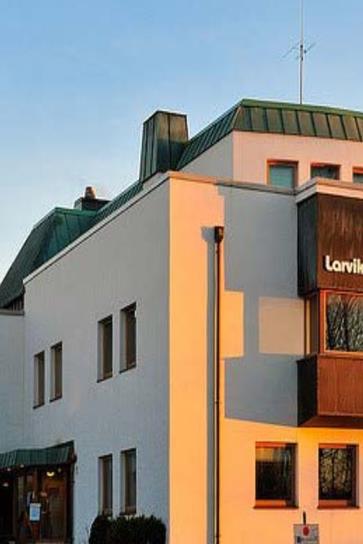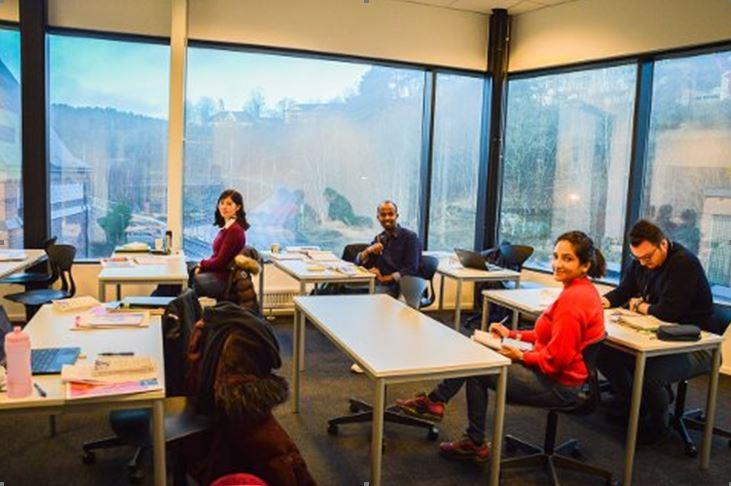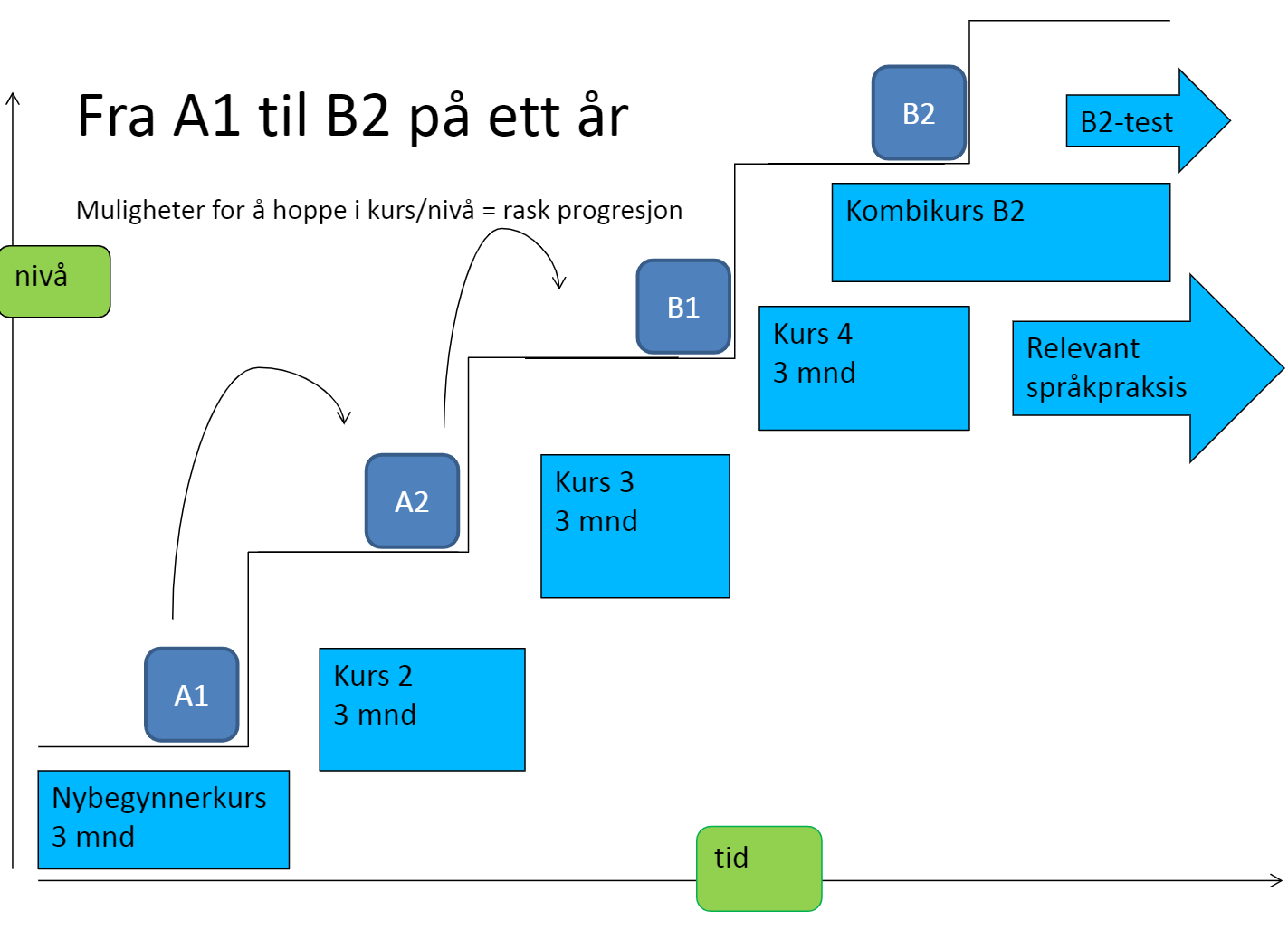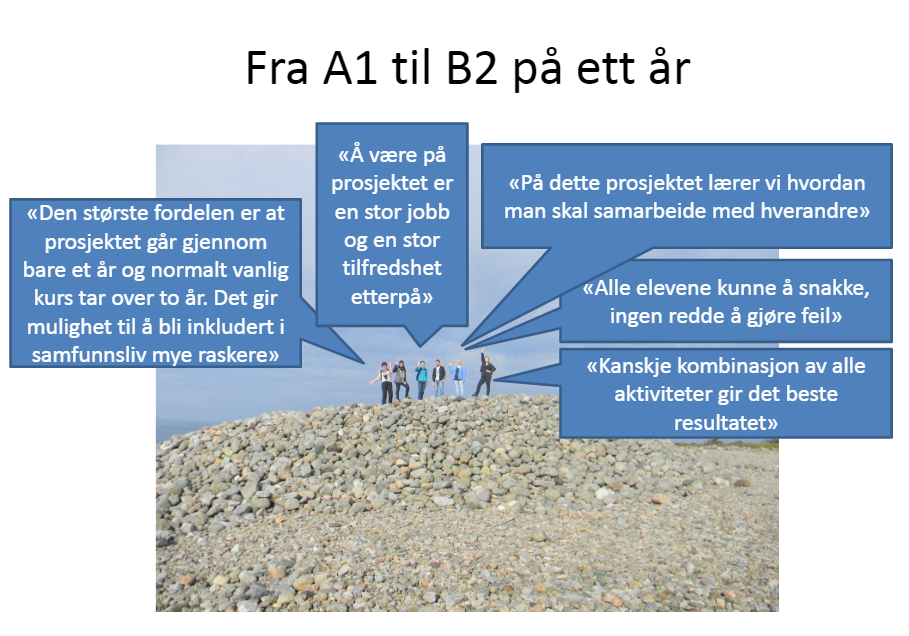Intensive Norwegian language training gives increased motivation
Larvik municipality has extensive experience in giving participants with higher education from their native country the opportunity for intensive language training. The “From A1 to B2 in one year” initiative gave participants a faster progress.
Challenge
There has been a lack of good methods that enable adapted learning and fast progression for the participants in Norwegian language training.
Initiative
The initiative consisted of several elements:
- Mapping participants early in Norwegian language training and start-up of the validation of prior learning process.
- Streamlining learning so that the participants had longer school days and closer follow-up at school and online, while they skipped (parts of) the regular courses.
- Work experience that matched the participants’ education and experience.
Result
The participants gained increased motivation and progression through participating in the initiative. However, it was difficult for the participants to reach B2 in one year, most needed more time.


Objective and target group
The aim of the initiative was for the participants to reach level B2 faster than with ordinary progression. They were to work more independently and efficiently than in the regular courses. They were to be prepared for everyday working life. The competence of the participants was to be used in the Norwegian labour market or in further studies.
Target group:
- participants with the right and obligation to attend Norwegian language training - who are at an early stage in their education - have higher education from their native country and want relevant work/or further education in Norway.
- participants with no right to Norwegian language training - who are at an early stage in their training, have higher education from their native country and want relevant work in Norway.
About the initiative
The participants received 30 hours of instruction per week. They attended ordinary classes and followed the online course “Min vei” in addition to 4 hours of project training per week. Depending on the individual’s development and progression, it was possible to skip courses.
Oral presentations and genre pedagogy were emphasised in the project. The participants worked on presentations that they gave both within the project group and to other classes at the school.
Guidance interviews were conducted with evaluations of the participants’ results and progression and the prepared individual plan.
The school counsellor provided a three-part career guide that was about “myself”, “my opportunities in the education system” and “my job opportunities”. The participants learned about jobs in the region and the rest of the country and participated in a career day at Larvik Language Centre. Only when the participants reached B1/B2 level were they given relevant job experience. This is because the participants are expected to master everyday language and primarily need technical language practice.
The job experience took place in close cooperation with NAV. Each participant was assigned a counsellor in NAV. NAV also followed up the contact at the workplace.

Organisation and economy
The work on intensive Norwegian language training is organised by the Norwegian School at Larvik Language Centre. The Norwegian Language School provides Norwegian language training to participants with the right and obligation to attend Norwegian language training and to paying participants.
The Norwegian Language School has many years of experience with Norwegian language training for immigrants and with organising various courses based on the participants’ background, competence and needs. The Norwegian Language School cooperates closely with NAV Larvik.
Public and private parties cooperated in “From A1 to B2 in one year”. The initiative was entrenched in key documents such as the community part of the municipal plan, the strategy plan for integration and the action plan for integration.
“From A1 to B2 in one year” was in operation until 2018. Due to changes in the framework, among other things, the programme offered today has been adjusted.
What happened?
Larvik Language Centre has developed and adjusted how it works with intensive Norwegian language training. On this page is a review of the “From A1 to B2 in one year” initiative, which helped to provide useful experiences and that formed the basis for the current programme.
Today, students are offered a combination of level B2 according to the national curriculum in Norwegian language and social studies for adult immigrants combined with Norwegian language classes at upper secondary school level according to the national curriculum in the Norwegian language – short period of residence. It has proved easier to achieve a good grade in Norwegian with a short period of residence than through the Norwegian language test/Test of Norwegian - advanced level (Bergenstesten).
Furthermore, the following are also important:
- Good mapping from the start
- Early start-up of the document validation process
- Continuous assessment of the participant’s potential, work capacity and language development so that he or she always has the opportunity to skip through courses.
Result
- By validating the participants’ prior learning and offering a fast track, they gained increased self-confidence and motivation.
- Although it was difficult for the participants to reach B2 in one year, working towards an ambitious goal gave faster progression.
- The project participants became good role models for other students at the school.

IMDis assesment
- The objective of “From A1 to B2 in one year” is ambitious. Although it has been difficult for many to reach B2 level in one year, the results show that working towards an ambitious goal gives faster progression.
- Allowing participants to skip a course is a measure from which more people can benefit but which municipalities that have the prerequisites to offer such flexibility in the educational programme will vary. The number of participants on track 3 in the municipality could influence what programmes the municipality can provide.
- There are good descriptions and illustrations of how the course is structured and this allows other municipalities considering the same initiatives to learn from Larvik.
About the assesment
IMDi’s quality assurance of best practice has been based on systematic assessments according to given criteria.
The criteria are:
- Result – what result does the practice produce?
- Descriptions – is the practice well described?
- Economy – what resources are required to implement the practice?
- Transferability – is it possible to implement the practice elsewhere?
The perspective on knowledge-based practice forms the basis for IMDI’s best practice work. It means that practices are assessed based on: Research-based knowledge, experience-based knowledge and user knowledge.
IMDi’s work on best practice is based on Rambøll’s report Model for identification and dissemination of best practice
Contact details
Name: Inger Hjortland
Position and place of work: Business Manager, Shared Function Larvik Language Centre
Tel.: +47 98 23 12 70
Email: inger.hjortland@larvik.kommune.no